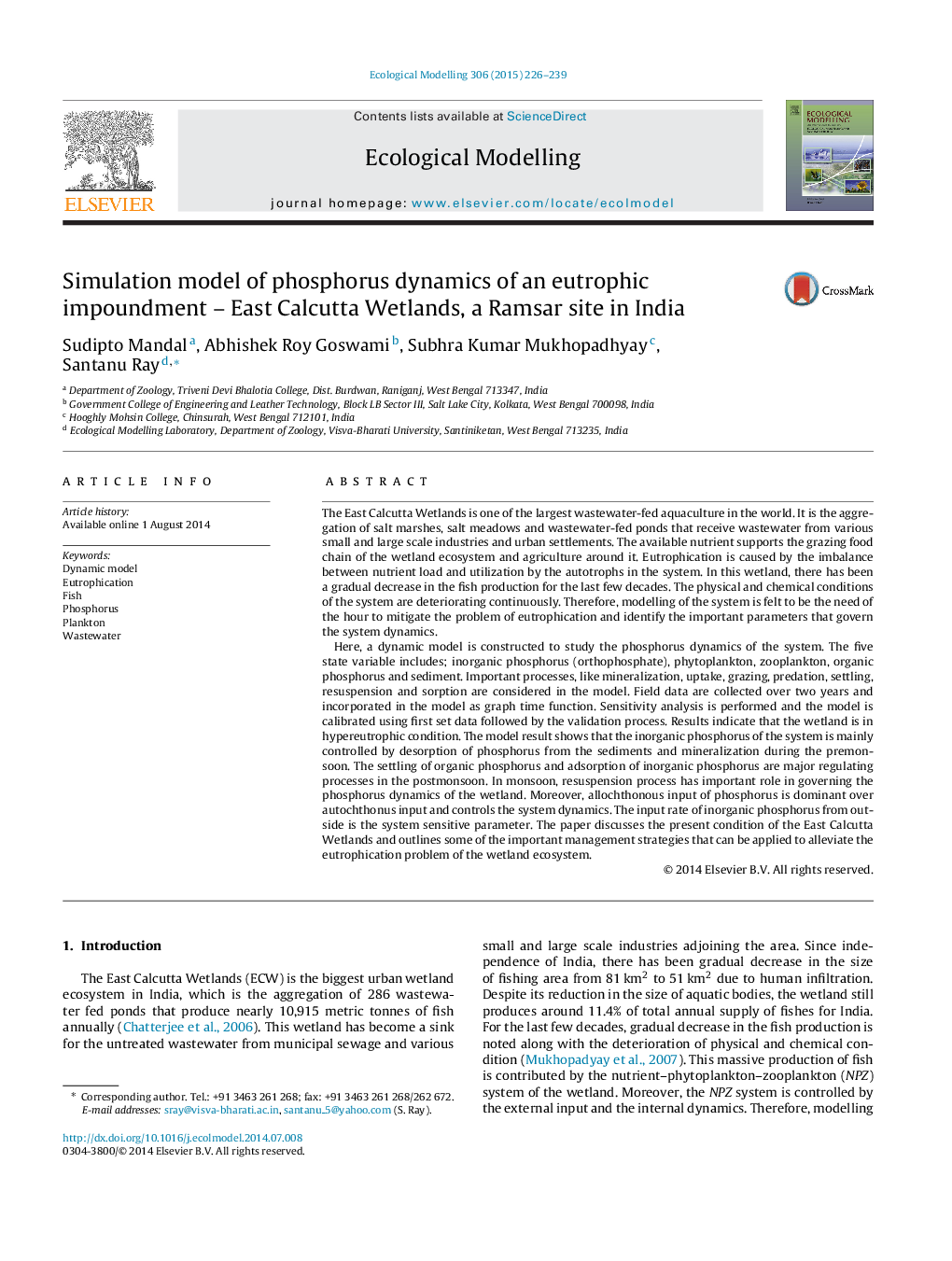| Article ID | Journal | Published Year | Pages | File Type |
|---|---|---|---|---|
| 4375727 | Ecological Modelling | 2015 | 14 Pages |
Abstract
Here, a dynamic model is constructed to study the phosphorus dynamics of the system. The five state variable includes; inorganic phosphorus (orthophosphate), phytoplankton, zooplankton, organic phosphorus and sediment. Important processes, like mineralization, uptake, grazing, predation, settling, resuspension and sorption are considered in the model. Field data are collected over two years and incorporated in the model as graph time function. Sensitivity analysis is performed and the model is calibrated using first set data followed by the validation process. Results indicate that the wetland is in hypereutrophic condition. The model result shows that the inorganic phosphorus of the system is mainly controlled by desorption of phosphorus from the sediments and mineralization during the premonsoon. The settling of organic phosphorus and adsorption of inorganic phosphorus are major regulating processes in the postmonsoon. In monsoon, resuspension process has important role in governing the phosphorus dynamics of the wetland. Moreover, allochthonous input of phosphorus is dominant over autochthonus input and controls the system dynamics. The input rate of inorganic phosphorus from outside is the system sensitive parameter. The paper discusses the present condition of the East Calcutta Wetlands and outlines some of the important management strategies that can be applied to alleviate the eutrophication problem of the wetland ecosystem.
Related Topics
Life Sciences
Agricultural and Biological Sciences
Ecology, Evolution, Behavior and Systematics
Authors
Sudipto Mandal, Abhishek Roy Goswami, Subhra Kumar Mukhopadhyay, Santanu Ray,
